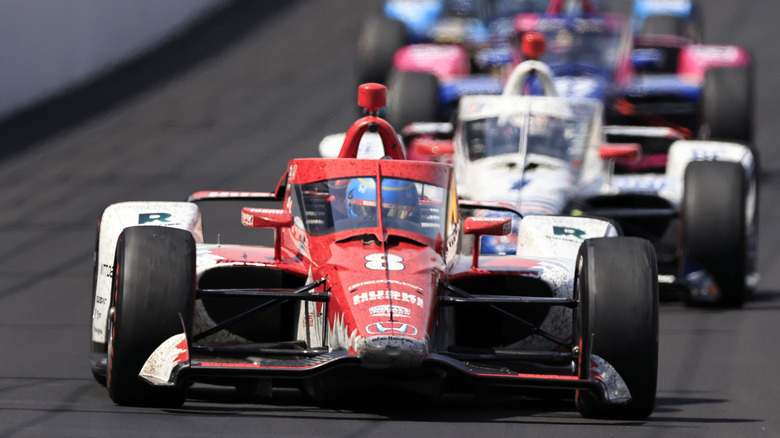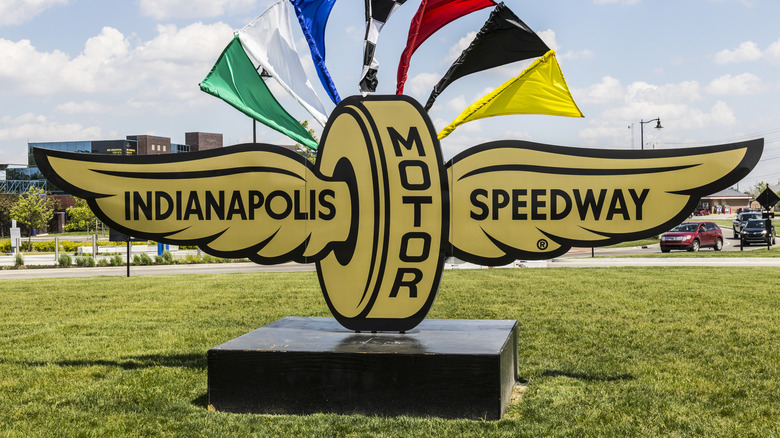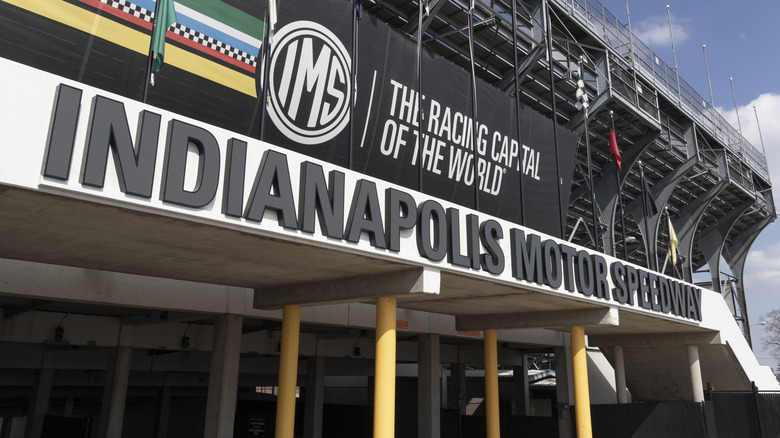Why The Indy 500 Is Called The Greatest Spectacle In Racing
Sporting events and nicknames sometimes go hand-in-hand, as can sporting events with TV and radio broadcasting. Some well-known sports nicknames are based on what a broadcaster said, such as Al Michaels' call at the 1982 Olympics when the U.S. hockey team beat Russia in the gold medal round, recorded in history as the "Miracle on Ice" (via ESPN). Among the most well-known auto racing competitions in the United States, the Indy 500, held each Sunday of Memorial Day weekend at Indianapolis Motor Speedway, gets referred to as the "greatest spectacle in racing" for similar reasons.
At the Indy 500, more than 30 IndyCars race at speeds exceeding 200 mph for 500 miles in a competition that lasts around three hours. In light of that, the "spectacle" tagline clearly fits (per Motorsport). The famous race wasn't always called that, though, and this nickname, too, relates to the history of sports broadcasting — radio broadcasting in particular, as the Indianapolis Motor Speedway explains.
The first Indy 500 radio broadcast was in the 1920s
The Indy 500 was first broadcast on the radio in the 1920s (the first race took place in 1911). Those broadcasts, though — limited to the Indianapolis area — were brief updates. Some years, they covered just the beginning or the end of the race. It wasn't until the 1950s that the entirety of the competition could be heard over the airwaves, in a program lasting more than four hours. It was also in 1952 that legendary sportscaster Sid Collins, known as the first "Voice of the 500," took to the airwaves for the newly-formed Indianapolis Motor Speedway Radio Network (IMS).
For the first time, the Indy 500 could be heard from "flag to flag" as far away as Germany, carried on the United States Armed Forces Radio Network, and on around a thousand affiliate radio stations (via the Indianapolis Motor Speedway Museum). For a broadcast that long, there naturally needed to be commercial breaks, and there was concern that listeners would stay interested. To address this, the phrase "the greatest spectacle in racing" was suggested at an Indianapolis radio station brainstorming session.
It came from a copywriter named Alice Green
The flagship radio station in the Indianapolis Motor Speedway Radio Network was WIBC, based in Indianapolis, and around 1953, with a full-race broadcast planned, station owner Richard Fairbanks called a meeting. The task at hand: come up with an exciting turn of phrase to signal to affiliate stations that a break was forthcoming, but that would also entice listeners to "not touch that dial. " An employee of Fairbanks named Alice Green, who was just 21 years old at the time, proposed, "Stay tuned for the greatest spectacle in racing." The nickname "the greatest spectacle in racing" is still in use today, immortalized by famed Indy 500 broadcaster Sid Collins.
On the fact her late mother was responsible for the nickname of one of the world's biggest sporting events, Green's daughter, Janet Smith, said in 2016, (via WISH-TV), "We thought it was the neatest thing in the world. We were as proud as could be about it. I don't remember her talking much about it. She was just sort of, it's my job it was just what I had to do." That same year, Green's son, Bill Bugher added, "(It) reminds me of the joke we had in the family that we wished we got a dollar every time that phrase was used. We'd be in pretty good shape."


